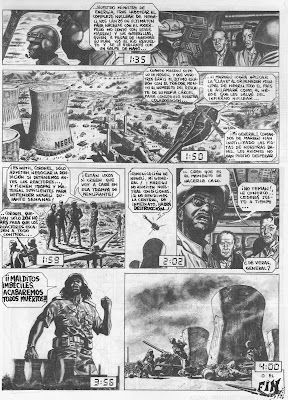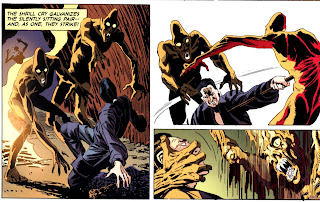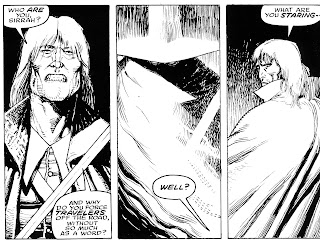Totem El Comix: Especial Concurso
(Totem comics: Special Contest)
art by Federico Gonzalez
1987
This striking illustration by the artist Jose Luis Escalante was used to demarcate a 'sampler' insert of comics from the Spanish magazine Totem El Comix that appeared in a 1987 issue of the Zona 84 Especialo Concurso (which loosely translates into 'special contest' or 'special competition' in English).
Like Zona 84, Totem El Comix was published by Toutain and was aimed at the same readership that Heavy Metal magazine addressed in the U.S.A., albeit with greater emphasis on 'erotic' material.
The above illustration was part of the short comic, titled 'A Key Prisoner' (Un Llave Prisoniera) that was drawn by Escalante and written by Federico Gonzalez, and published in the Especialo Concurso. I've posted it below. It's unfortunate that an English translation never was made............



















































